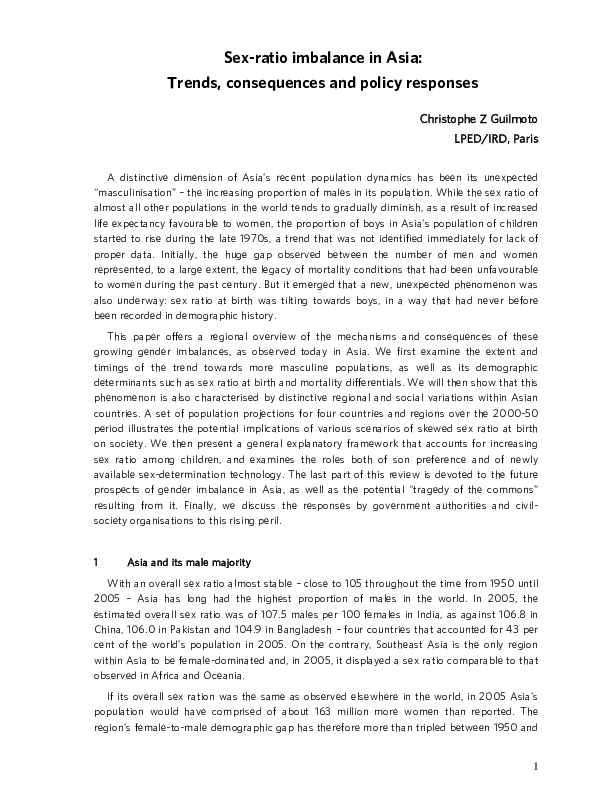
Resources
Sex-ratio imbalance in Asia: Trends, consequences and policy responses
Resource date: 2005
Author: Christophe Z Guilmoto
Publisher: UNFPA

Resources
Resource date: 2005
Author: Christophe Z Guilmoto
Publisher: UNFPA
A distinctive dimension of Asia’s recent population dynamics has been its unexpected “masculinisation” – the increasing proportion of males in its population. While the sex ratio of almost all other populations in the world tends to gradually diminish, as a result of increased life expectancy favourable to women, the proportion of boys in Asia’s population of children started to rise during the late 1970s, a trend that was not identified immediately for lack of proper data. Initially, the huge gap observed between the number of men and women represented, to a large extent, the legacy of mortality conditions that had been unfavourable to women during the past century. But it emerged that a new, unexpected phenomenon was also underway: sex ratio at birth was tilting towards boys, in a way that had never before been recorded in demographic history.